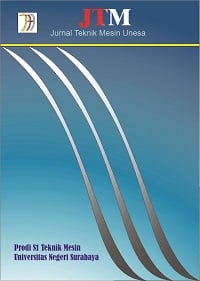UNJUK KERJA NYALA API DARI BIOETANOL UMBI BATANG PISANG RAJA (MUSA PARADISIACA) DICAMPUR DENGAN PERTALITE
Downloads
Download data is not yet available.
Downloads
Published
2022-03-16
Issue
Section
Articles
 Abstract views: 243
,
Abstract views: 243
, PDF Downloads: 336
PDF Downloads: 336


